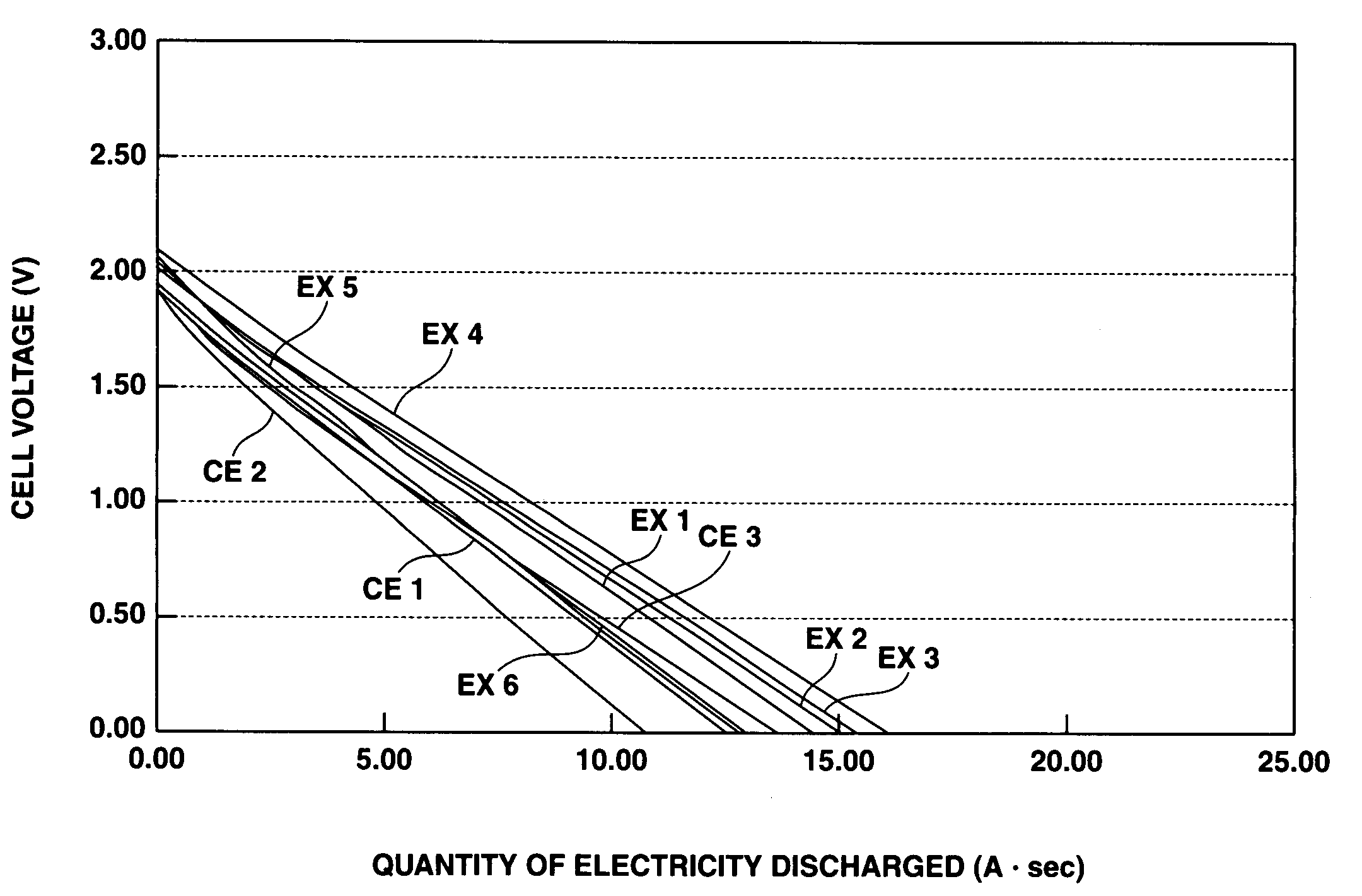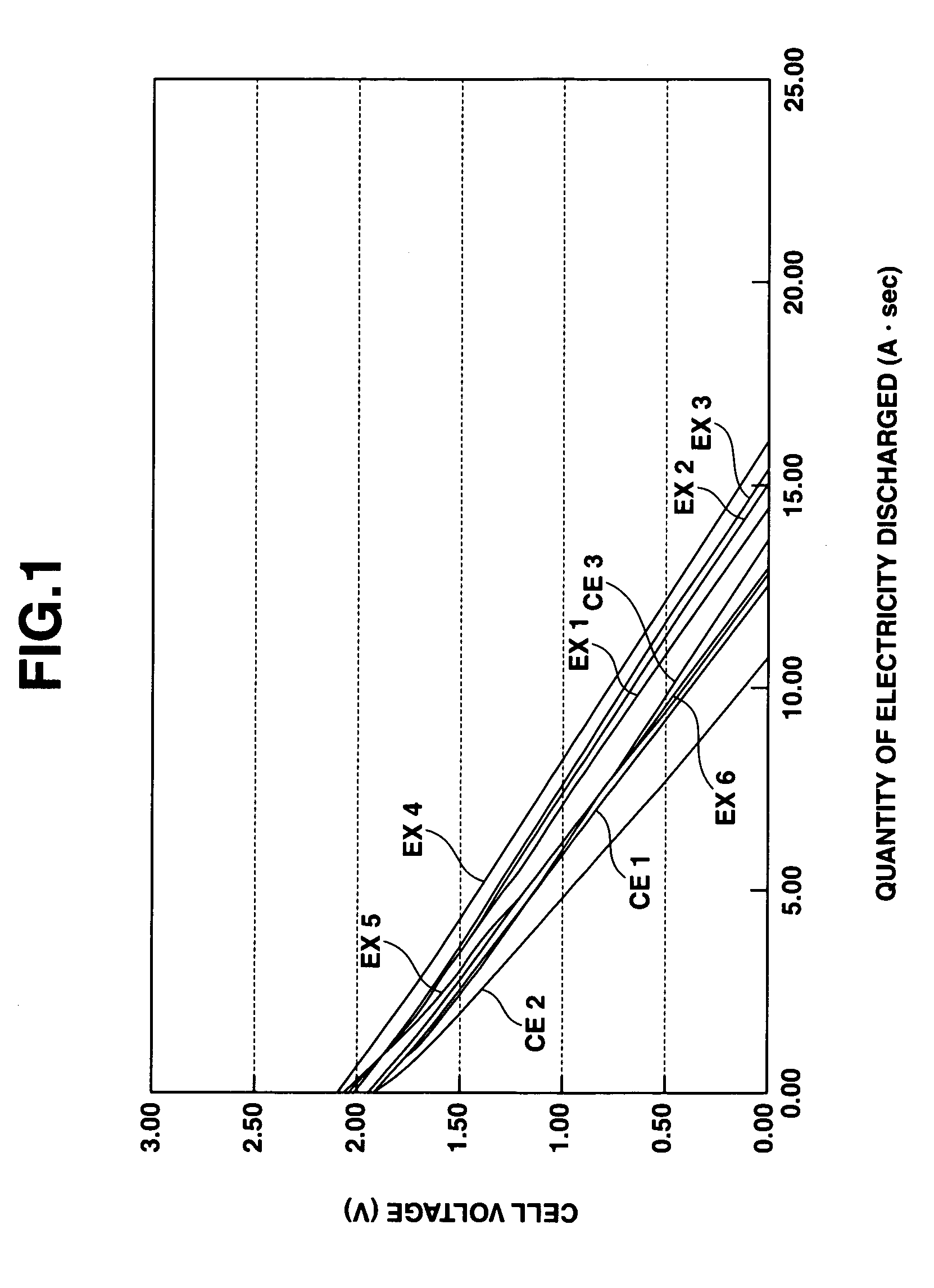Electric double-layer capacitor
a double-layer capacitor and capacitor technology, applied in the direction of capacitors, hybrid capacitor electrolytes, electrical equipment, etc., can solve the problems of low chemical stability, lack of thermal stability, and insufficient life of electric double-layer capacitors using cellulose separators, and achieve excellent longevity and high capacitance
- Summary
- Abstract
- Description
- Claims
- Application Information
AI Technical Summary
Benefits of technology
Problems solved by technology
Method used
Image
Examples
examples
[0091]The following Examples and Comparative Examples are provided to illustrate the invention, and are not intended to limit the scope thereof.
examples 1 to 6
, and Comparative Examples 1 to 3
(1) Production of Activated Carbon (Electrode Active Material)
[0092]Shonol BRP-510F (Showa Highpolymer Co., Ltd.) was cured and infusibilized at 180° C., then coarsely milled. This coarsely milled material was carbonized and fired at 900° C., then steam activated, after which it was finely milled, thereby giving activated carbon.
(2) Manufacture of Element
[0093]An active material composition-forming slurry was prepared by adding 250 parts by weight of 1-methyl-2-pyrrolidone (NMP, available from Godo Solvents Co.) to a mixture of the activated carbon obtained in (1) above, Denka Black HS-100 (Denki Kagaku Kogyo K.K.) and PVDF (Sigma-Aldrich Japan K.K.) in a weight ratio of 100.0:5.0:5.5.
[0094]The slurry was coated onto one face of an aluminum oxide sheet (30CB, available from Japan Capacitor Industrial Co., Ltd.; t=0.030 mm), then dried and rolled. The coated sheet was then cut into pieces 50.0 mm (of which the coated portion accounted for 40.0 mm)×20....
example 7
[0100]An element manufactured in the same way as in above Example 2 was sandwiched between 1.00 mm thick polypropylene sheets, then inserted into an aluminum enclosure having a wall thickness of 0.40 mm and an inside width (thickness direction of element) of 2.88 mm. Next, the electrolyte solution was poured in an excess amount with respect to the total pore volume of the element and a vacuum of ≦10 Torr for one hour, following which the excess solution was dumped out and the container was tightly sealed, thereby giving an electric double-layer capacitor cell. The amount of electrolyte solution filled into the capacitor cell at this time was 99 vol % with respect to the total pore volume of the element.
[0101]
TABLE 1Separator thicknessSeparator porositySeparatorTotal poreTotal poreTotal pore(mm)(vol %)effectivevolume involume inratio (separator / BeforeAfterBeforeAfterporepositivenegativepositive +StresselementelementelementelementvolumeelectrodeelectrodenegativeSeparator(kPa)assemblya...
PUM
 Login to View More
Login to View More Abstract
Description
Claims
Application Information
 Login to View More
Login to View More - R&D
- Intellectual Property
- Life Sciences
- Materials
- Tech Scout
- Unparalleled Data Quality
- Higher Quality Content
- 60% Fewer Hallucinations
Browse by: Latest US Patents, China's latest patents, Technical Efficacy Thesaurus, Application Domain, Technology Topic, Popular Technical Reports.
© 2025 PatSnap. All rights reserved.Legal|Privacy policy|Modern Slavery Act Transparency Statement|Sitemap|About US| Contact US: help@patsnap.com



